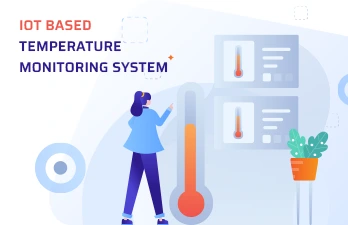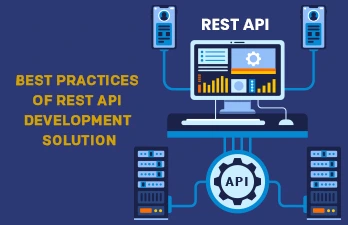In the cryptocurrency world, DeFi is quite acquainted and within the short form, it summarizes the entire concept. The term stands for the full form of Decentralized Finance which is considered a protocol that is slightly different from conventional financial solutions. The crypto and blockchain-related transaction operations are carried out, however, DeFi does not need any intermediaries for carrying out a transaction. It helps to cut off the banks and intermediaries including stock exchanges and brokers. The primary DeFi has undergone relevant upgrades and updates resulting in DeFi 2.0. This article sets forth the different prospects of DeFi 2.0 and how it is playing a significant role in crypto.
The context will enable readers to obtain critical insights into DeFi 2.0 and how it impacts the blockchain. Let's take a look at distinct aspects below.
Introduction to DeFi 2.0
Decentralized finance or DeFi 2.0 is delineated as a complete collection of projects that have the potential to improve the glitches in DeFi 1.0, the primary rendition. The previous rendition of the system comprises issues like security, liquidity, scalability, as well as the accessibility of information. From the time of implementation 2.0 can be considered by most people for using crypto and comprehending the benefits of decentralization in finances.
The improvement to DeFi 2.0

Several important changes have led to the advent of the DeFi 2.0 with the various features mentioned below.
Aspects of lending
The enhanced protocols of the DeFi 2.0 it has begun offering higher rewards for earning more liquidity. DeFi platforms acquire assets that administer the platform’s liquidity and in turn, get benefits like token trading and collateralized borrowing. However, the contract did not bind the liquidity providers from giving the cash out which usually happens when the liquid rewards dry up.
Yield farming
In the arena of DeFi yield farming is a popular word. The yield farming will assist in generating a digital asset yield. The concept of reinvesting the returns is the best part of yield farming.
Decentralized autonomous organizations
The DeFi previous rendition was lacking real decentralization. With the improvements in DeFi 2.0 more protocols are shifting to the DAO operating process. DAO is generally managed as well as owned by many communities of users without any interference from any centralized authority.
Liquidity mining
Since 2020 DeFi is having a massive obstacle of consistent lacking of long-term sustainable liquidity. DeFi platforms have obtained huge popularity with their liquid mining and provisions. DeFi platforms have acquired liquidity with the help of incentivizing systems such as liquidity mining. In such a process there is the inclusion of the third parties where you lend tokens. These tokens can be exchanged for incentives. A DeFi platform staking and lending the crypto assets will allow it to receive a few native tokens of the platform.
The importance of DeFi 2.0 and why does it matters
The previous rendition of DeFi when upgraded to the newest rendition has a complete set of financial services. The MakerDAO present in the DeFi allows utilizing collateral against the stable coins and minimal volatile assets. The various derivatives platforms enable the creation of synthetic tokenized assets. It leads to the building of index creations such as the crypto index.
The platforms are highly protected and thereby leaves no individual responsible for any kind of security breaches. The previous version lacked security areas and these loopholes were solved in the DeFi 2.0.
Distinct advantages of DeFi 2.0

In this context, it is important to acknowledge the various benefits of DeFi 2.0. Let's take a glance at the different advantages below.
- Decentralized finance of the latest rendition does not rely on fiat-backed stable coins in contrast to DeFi which was completely reliable on stable coins. With time as technologies are evolving DAO is also evolving rapidly. The decentralized reserve is considered a free-floating reserve that is backed by assets. DAO 2.0 is creating enhanced sustainable replacements for stable coins.
- The DeFi 2.0 helps in improving capital efficiency. It assists in securing smart contracts insurances for resolving liquidation risk. Decentralized finance 2.0 has its own perks which have strengthened the system. Herein lies the importance of a PCL or protocol controlled liquidity pool that has been used by many other projects such as Avalanche and polygon. The users’ liquidity is used to invest in other projects and also share the profit with the shareholders.
- The open-source insurance providers conduct security audits for making sure that the smart contracts do not comprise any exploitable inadequacy. This kind of insurance assists in reimbursing those who have already lost money.
Risks involved in DeFi 2.0 and ways of prevention
The interference of the government authorities in terms of rules and regulations in crypto has really made it a challenging task. The DAO and its operations are growing day by day in DeFi 2.0. There are many similar risks involved in DeFi 2.0. Given below are some of the relevant risks involved to keep into account.
- There are times when smart contracts have backdoors and weaknesses. Therefore, proper research and study should be conducted prior to investing. Every investment comes with a distinct form of risk. The safety relating to a project cannot be guaranteed with just an audit.
- The leading to impermanent loss and risks of liquidity mining is massive. Insurance, at times, is unable to minimize them.
- Different governments and authorities impose regulations that have adverse effects on the various crypto investments. However, rules on the part of crypto bring safety and stability to investments.
- One may face difficulty in accessing funds in crypto. While staking through a DeFi project website it is relevant to locate the smart contract on a valid blockchain explorer. When due for some reason the website goes down, then it becomes impossible to withdraw a smart contract directly.
Use cases of DeFi 2.0

The various prominent use cases of DeFi 2.0 include different blockchain networks.
Liquidity in cross chain
With the objective of combating the low liquidity the decentralized finance newest version will allow cross-chain bridges. With the help of smart contracts and liquidity pools, the distinct blockchains can be connected. The users are capable of obtaining access to more assets rather than the native rendition. Trading plays an important role in resolving the lack of liquidity of an asset on a chain.
Self repaying loans
There are some platforms where the user can use liquidity provider tokens and yield farm liquidity provider tokens as collateral for a loan. One can easily benefit from loans at the time of earning pool rewards. The collateral can be enabled generating the lenders’ interests. The interest is advantageous as it does not require any additional payments.
Unveiling the importance of staked funds
As you stake a token pair in a liquidity pool the user will receive liquidity provider tokens. This is not the scenario with decentralized finance 2.0 as it will compound the profits. It helps to progress the process and makes the best use of the yield farm liquidity provider tokens. The primary aim lies in the fact that the liquidity provider tokens can unveil their value for newer opportunities with APY.
Smart contract insurance
With a view to assessing a project, better diligence should be accomplished. This, in turn, can create risk at the time of investing in DeFi finance projects. This issue is solved in decentralized finance 2.0, therefore, availing insurance on specific smart contracts. If the user has staked liquidity provider tokens on smart contracts, then there remains a chance of losing deposits. This is solved by the insurance with the assurance of yield farm for a fee.
Insurance for temporary loss
Temporary losses are situations where the financial loss occurs if there is an alteration in the ratio of the tokens as you invest in a liquidity pool. This can be the first procedure of liquidity mining. A token can be added to the single-sided liquidity provider where there is no other usage of another pair. The user can thereby receive the fees from the swap in the pairs.
These fees can be used for establishing a business fund for securing the deposit against the effects of temporary losses.
Read more: How Blockchain is Transforming the Real Estate Industry?
Conclusion
As more progressive technologies are taking over the industry sectors, decentralized finance 2.0 is beginning to acknowledge more individuals about the prototypes of finance. The front-end designs of decentralized finance 2.0 protocols have been simplified thereby making them user-friendly. It bridges the gap by educating that crypto is still an evolving concept. Nextbrain is the renowned mobile app, blockchain and web development company in India that offers many services to clients throughout the world including app development, web development, blockchain development services, web designing, and SEO services. With advanced tools and technology stacks, the expert professionals build APIs for different high-end products.




Saran
April 20, 2022 Author